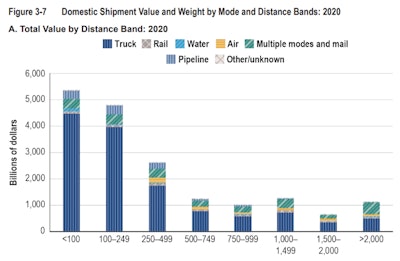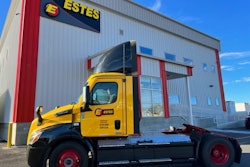Drop your bitcoin in the faux-antique jukebox and watch the virtual platter spin up. Who would have thought John Sebastian and the Lovin’ Spoonful had diesel and battery electric trucks on their minds in 1965?
🎶 Did you ever have to make up your mind?
You pick up on one and leave the other behind
It's not often easy and not often kind
Did you ever have to make up your mind?
Did you ever have to finally decide?
And say yes to one and let the other one ride
There's so many changes and tears you must hide
Did you ever have to finally decide? 🎶
Some pretty big names have gotten in the game of us versus them. The traditionalist versus the futurists. It’s the main card. The Super Bowl of freight. It’s a rumble in the freight jungle, and there can be only one winner. Right?
Wrong.
For starters, we all need to get past the football game and prize fight paradigm. Moving freight is anything but a this-versus-that event. It never has been.
In 1825, in New York state, you could move freight between Albany and Buffalo by person, horse, ox drawn wagon, human powered cart or the new Erie Canal. One company even started moving coal in 1828 by steam train in nearby Pennsylvania.
By 1970, freight modes had expanded considerably, to motorcycles and cars, barges, ships, the new container systems on ship, rail and truck, airplanes, a myriad of vehicle types and endless combinations of these enabled by new airports, new port facilities, new highways, new fueling and service infrastructure, and more.
Today, bicycles, Segways and scooters are included in how we move freight.
Freight movement has always been and will always be about shipper choice.
There is not one way to move freight but rather a whole system of choices.
So why do some research groups and industry advocates focus on long-haul trucking as the only meaningful form of hauling freight? How is it they can ignore all the other duty cycles and conveyances? Is it merely pandering to a base? Telling people what they want to hear rather than providing the whole picture?
There are some realities out there. For example, at least 40% of all Class 8 tractor sales are day cabs. Another is that there are millions of Class 2b through Class 7 freight hauling vehicles on the road today. There are significant factual research reports from credible sources such as SAE, the Transportation Research Board and various state transportation research centers around the U.S. that document that a lot of trucks drive empty backhauls, on anywhere from 10% to exceeding 50% of trips.
Yes, trucks dominate freight at all distances, but the data shows the majority of freight movement is below 250 miles. The graph below, from the US DOT Transportation Statistics Annual Report (TSAR) 2022, shows the value of freight categorized by distance hauled. The two left hand columns together exceed $10,000 billion, while the remaining distance categories all added together equal approximately $7,000 billion. The graph also shows the majority of those movements under 250 miles are by truck. That is not long haul. Even in a round trip, the majority of freight can be carried daily by day cabs and Class 2b-7 trucks.

So why the focus on choosing powertrain technology solely on whether it can compete with long-haul diesel trucks? That’s like recommending shipping a box of candies to your sweetheart across town on Valentine’s Day using a 747 jumbo jet. Yes, you can do it, and if you pay enough, FedEx, UPS or another might actually ship it across country by plane twice to get it to your sweetheart the next day, but it may not make sense.
Representing long-haul trucking as the primary comparison point for diesels versus battery electric vehicles is a problem with reality. Asserting that all trucks need to be sized for long-haul routes exceeding 600 miles per driver shift means a lot of trucks will be greatly over-spec’d for their jobs.
It’s describing all your freight problems as nails and only long-haul truck hammers can solve them. It’s a disservice to all those freight companies in the real-world that are providing shippers daily with choices. Those fleets and shippers that can optimize freight hauling around actual requirements are going to be more profitable in the long run.
Freight yesterday, today, and tomorrow was, is and will always be about choice.
Will you ever have to finally decide? Yes. But you’ll always have a lot to choose from.














